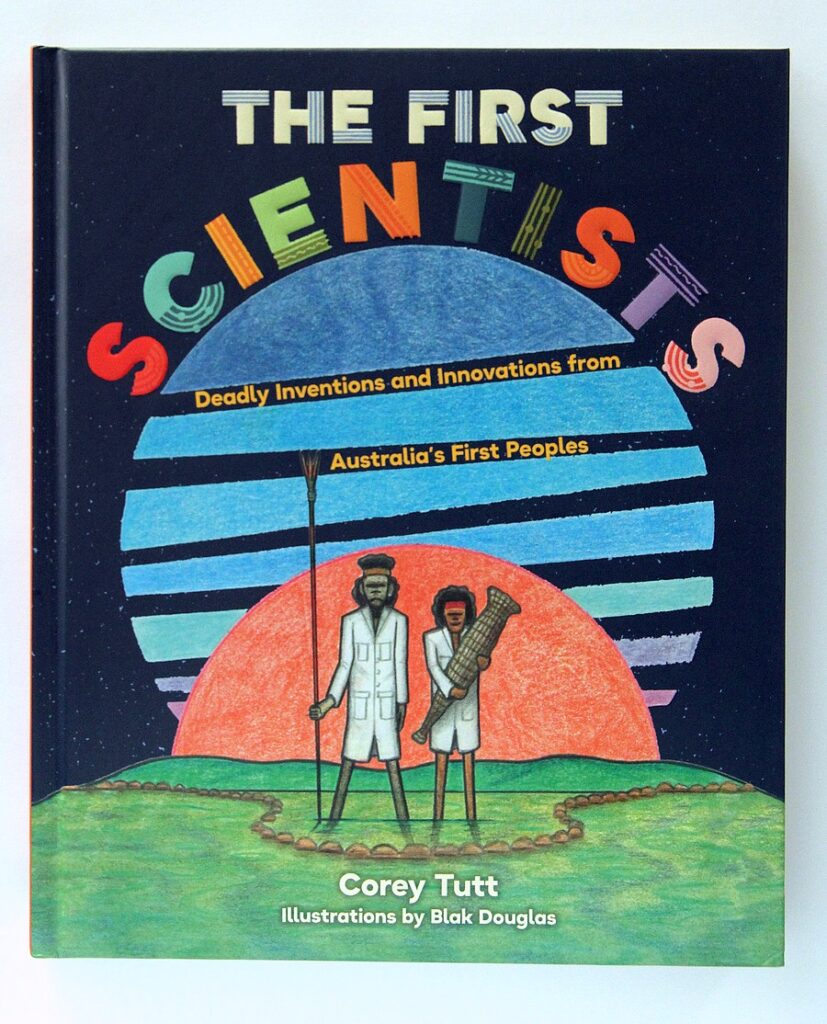
The First Scientists – Deadly Inventions and Innovations from Australia’s First Peoples by Corey Tutt, STEM advocate and founder of Deadly Science and illustrated by Blak Douglas shares Australia’s First peoples awe inspiring scientific knowledge and experience. We are privileged to be able to learn from the oldest continuing culture on earth. This book written in consultation with communities and elders is brimming with fascinating scientific facts, incredible innovation, resourcefulness, examples of problem solving and finding creative as well as effective solutions to problems through observation and skill. At the beginning of the book, Corey Tutt invites readers to follow in the footsteps of First Nations scientists and observe, pause to consider and explore what is happening in nature, notice subtle changes and details, ask curious questions, challenge the narrative and create your own. There are six chapters – the first astronomers, the first engineers, the first forensic scientists, the first chemists, the first land managers and the first ecologists. Various examples are noted throughout the book where today’s scientists are increasingly connecting with First Nations scientists to employ methods based on ancient knowledge and experience to preserve and protect the environment.
Right from the first chapter about the first astronomers, the reader will be captivated by the scientific skill and knowledge the First Nations scientists possess. There are fascinating details about how the constellations are filled with clues, the ways in which the changing positions of the constellations provide information about the seasons and inform when emu eggs can be collected. Stars can be used to gain information for hunting and harvesting. It is engrossing to read the multitude of ways the sky is used to predict weather; I was particularly fascinated to learn the observations about the points of the ends of the crescent moon and what this means for rainfall. These astute observations result in optimal conditions for harvesting and food supplies. It is enthralling to learn about some of the first scientists engineering feats, not only remarkable and complex in design (for example, the fish and eel traps) but also insightful in their planning and includes sustainable features. The skincare, bush medicine and wound treatment information is incredible, I was particularly impressed with the ingenious method used to catch fish minus fishing rods (or a fishing trap) involving a bush medicine.
Today, the wealth of knowledge and experience from the first scientists is being tapped into and used for a plethora of reasons. Scientists today are using the first scientist’s knowledge to reduce the effects of climate change. There is a story in the book about scientists from the University of Queensland collaborating with traditional owners to produce friendly glues and plastics as well as renewable, sustainable materials from spinifex grass. Rescuers use First Nations people as trackers as their expertise is invaluable in finding people and animals lost in the bush. Trackers have been used to locate crocodiles posing a threat to humans. First Nations rangers are working with scientists to save the bilby. The recent 2020 bushfires led to conversations about the ways in which the first scientists managed the land with fire. The first scientists have a history spanning over 65 000 years of managing the land with fire, this has resulted in an unrivalled knowledge and expertise in terms of timing (in which seasons and how the time of day affects the cool burns) and for regeneration purposes. The information included about the time since colonisation explores the deeply disturbing and devastating impacts of fire since ancient practices have been disregarded.
This highly engaging book is exceptional and will no doubt inspire readers to further investigate First Nations peoples and their rich scientific history as well as make more of their own discoveries. After reading this captivating book, one cannot help but feel enormous pride and respect for the first scientists.
Teachers’ Notes can be downloaded from Hardie Grant Publishing.
